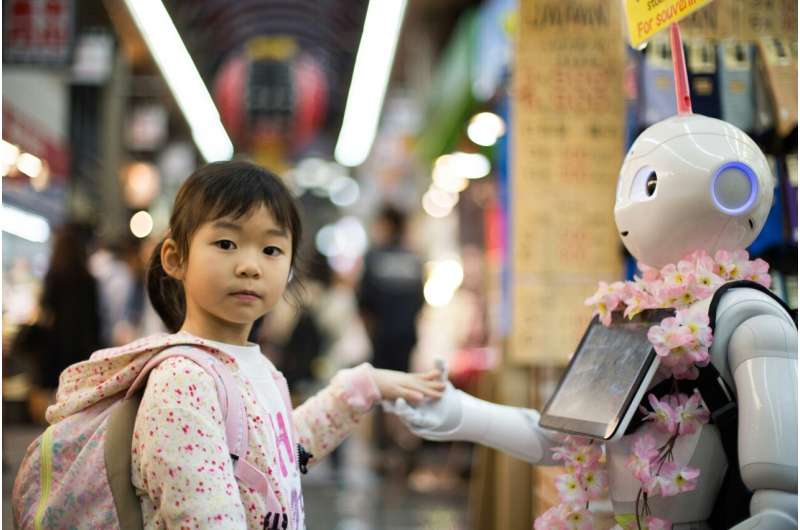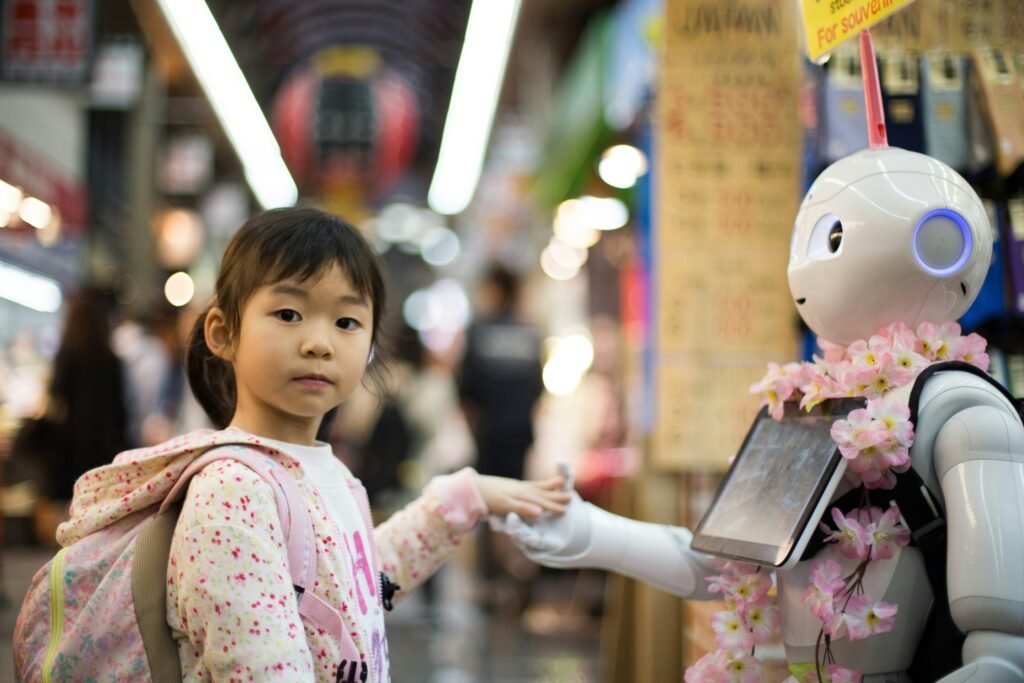
Credit: Unsplash/CC0 Public Domain
From the development of the first “social robots” (robots with physical bodies programmed to talk and engage with humans) like Kismet in the 1990s, to smart speakers like Amazon’s Alexa, humans are interacting with artificial intelligence (AI) more than ever before.
However, this technology is changing the relationship between humans and technology, and between humans themselves.
Our new research explores how humans experience interactions with AI social robots and digital avatars – AI virtual chatbots designed to look and interact like humans on our devices – which are designed to augment human interaction.
Social robots such as ElliQ and Pepper are popular in Europe, Japan and the US, particularly as assistants for the elderly. New Zealand has been slow to adopt the technology.
Since the pandemic, social robots and digital avatars have been used to address issues such as loneliness and mental health problems. In one experiment conducted in Scotland during the pandemic, people met a social robot called Pepper through a regular video chat. Researchers found that the interaction lifted participants’ moods.
Given the uncertainties surrounding the long-term use of these types of technologies, researchers and policymakers have a responsibility to ask how they will affect individuals and society as a whole.
Human response to AI
Research has already shown that these types of technologies are playing a larger role in human social relationships, changing the way people connect and relate.
Our research involved in-depth interviews with 15 participants across New Zealand, Australia and Europe, as well as more extensive data analysis. We found that when people interact with AI social robots and digital avatars, two things happen simultaneously:
First, users exhibited physical reactions and emotions toward the AI technology, and these reactions were largely subconscious.
For example, one user wrote, “I unconsciously reached out and [AI avatar’s] Participants saw “hair” on the screen – an instinctive response, as participants wanted to use their senses (e.g. touch) to engage with the digital avatar. Another participant unconsciously smiled in response to the social robot’s smile.
Second, users derived meaning from their interactions with the AI technology through the use of shared language, concepts, and non-verbal communication. For example, when one participant frowned, the digital avatar responded with “glassy eyes,” as if upset by the participant’s facial expression.
This shared non-verbal communication allowed participants to meaningfully interact with the technology.
Participants also developed a certain level of trust in the AI social robots and digital avatars, and when the conversation flowed smoothly, users forgot they were interacting with a machine.
The more human-like the AI social robots and digital avatars were, the more lifelike and believable they appeared, and as a result, participants forgot they were interacting with technology because it felt “real.”
As one participant put it, “Even the most cynical of people forget where they are and what they’re doing. They experience the feeling of enjoying a relationship with another person while skeptical that a system could have such sophisticated conversations.”
AI social robots and digital avatars are increasingly sharing the same space as humans, online and in person, and people are seeking to physically interact with the technology as if they were human.
“I feel a bit of a spiritual connection with her (the AI digital avatar) because I spent a lot of time with her,” another participant said.
In this way, the function of technology has changed from an aid to connecting people to being an object of affection itself.
Pioneering the future of AI
While recognising the benefits of AI social technologies, such as addressing loneliness and health issues, it is important to understand the broader impacts of their use.
The COVID-19 pandemic has shown how easily people can shift from face-to-face interactions to online communication. It is easy to imagine how this could change further, for example as humans become more comfortable forming relationships with AI social technologies. We are already seeing examples of people seeking romantic relationships with digital avatars.
The tendency for people to forget they are engaging with AI social technology and feel as if it is “real” raises concerns about unsustainable or unhealthy attachments.
As AI becomes more deeply integrated into everyday life, international organizations are recognizing the need for guidelines to guide its development and use. It is clear that governments and regulators need to understand and respond to the impact of AI social technologies on society.
The AI Act recently passed by the European Commission shows other governments the way forward: it sets out clear regulations and obligations regarding certain uses of AI.
It’s important to recognize the unique characteristics of human relationships as something that should be protected. At the same time, we need to consider how AI might impact how we engage and interact with others. Asking these questions will help us better navigate the unknown.
Courtesy of The Conversation
This article is republished from The Conversation under a Creative Commons license. Read the original article.![]()
Quote: Social robots or digital avatars, users interact with this AI technology as if it were the real thing (July 24, 2024) Retrieved July 29, 2024 from https://techxplore.com/news/2024-07-social-robot-digital-avatar-users.html
This document is subject to copyright. It may not be reproduced without written permission, except for fair dealing for the purposes of personal study or research. The content is provided for informational purposes only.

